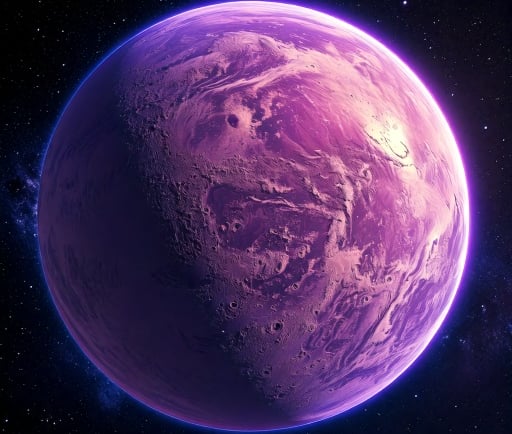CFHTWIR-Oph 98 B: The Exoplanet Amidst a Red Dwarf


Introduction to CFHTWIR-Oph 98 B
CFHTWIR-Oph 98 B is an intriguing gas giant exoplanet that captivates astronomers and astrophysicists alike. Discovering such massive bodies beyond our solar system allows for greater understanding of planetary formation and the dynamics of exoplanetary systems. This article delves into the fundamental characteristics of CFHTWIR-Oph 98 B, particularly focusing on its mass, orbital period, and host star.
Characteristics of CFHTWIR-Oph 98 B
With a remarkable mass of 7.8 Jupiters, CFHTWIR-Oph 98 B stands out as one of the heavier gas giants discovered to date. Such a significant mass indicates not only a unique formation scenario but also provides insights into the gravitational interactions within its system. This exoplanet orbits a red dwarf star, a class of stars known for their longevity and stability, which further extrapolates the possibilities for studying planetary atmospheres and conditions that might be present on such worlds.
The Orbit of CFHTWIR-Oph 98 B
One of the most fascinating aspects of CFHTWIR-Oph 98 B is its incredibly lengthy orbital period. It takes approximately 22,027.4 years to complete one full orbit around its host star. This extended orbital cycle not only affects its atmospheric characteristics but also implies a wide orbital distance, which can significantly influence any potential satellite formation or interactions with other celestial bodies in the vicinity.
Understanding the dynamics of such an extremely long orbital period contributes to the broader knowledge of planetary systems, particularly concerning how gas giants like CFHTWIR-Oph 98 B evolve over eons. The stability of its orbit offers valuable data for models predicting the habitability and potential for life on nearby exoplanets.
Conclusion: The Significance of CFHTWIR-Oph 98 B in Exoplanet Studies
In conclusion, CFHTWIR-Oph 98 B serves as a significant addition to the ongoing research surrounding exoplanets. Its substantial mass, extended orbital period, and red dwarf host create a compelling case for systematic study. As astronomers continue to uncover the complexities of the universe, such gas giant exoplanets provide critical opportunities to enhance our understanding of planetary physics, formation, and the potential for life beyond Earth.
